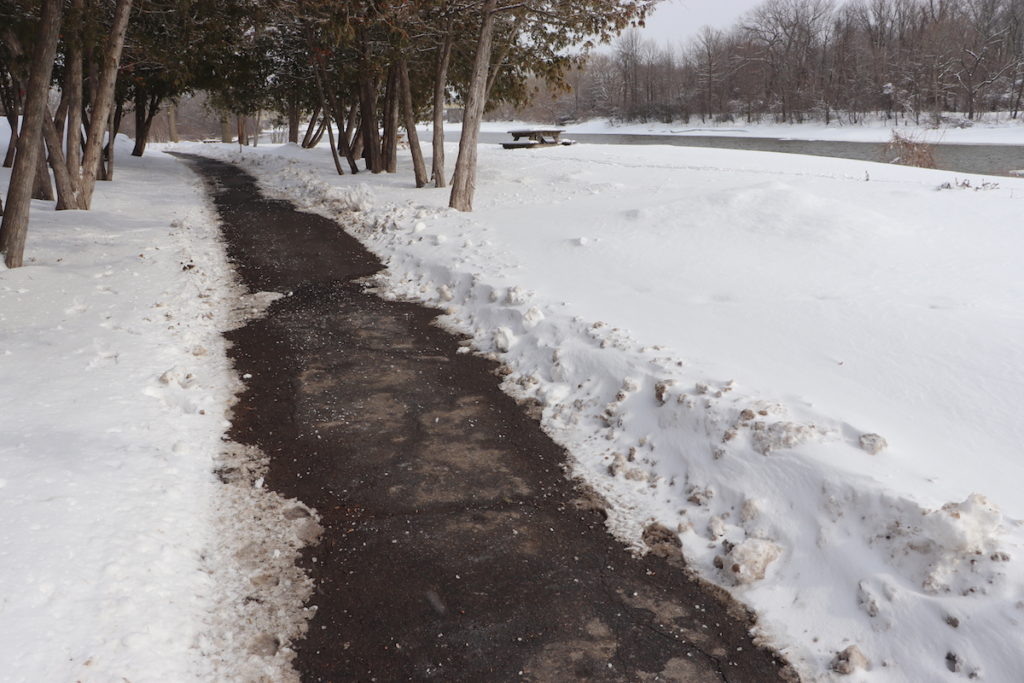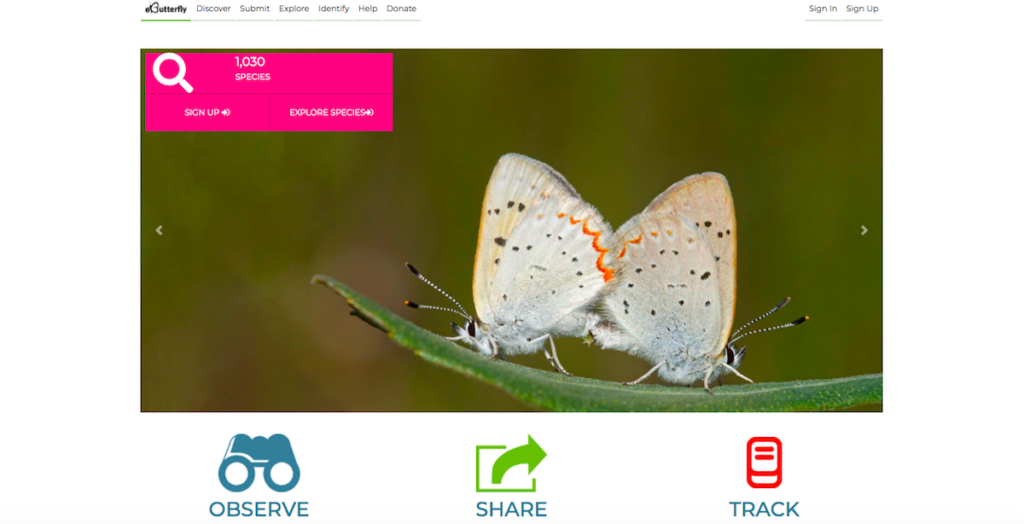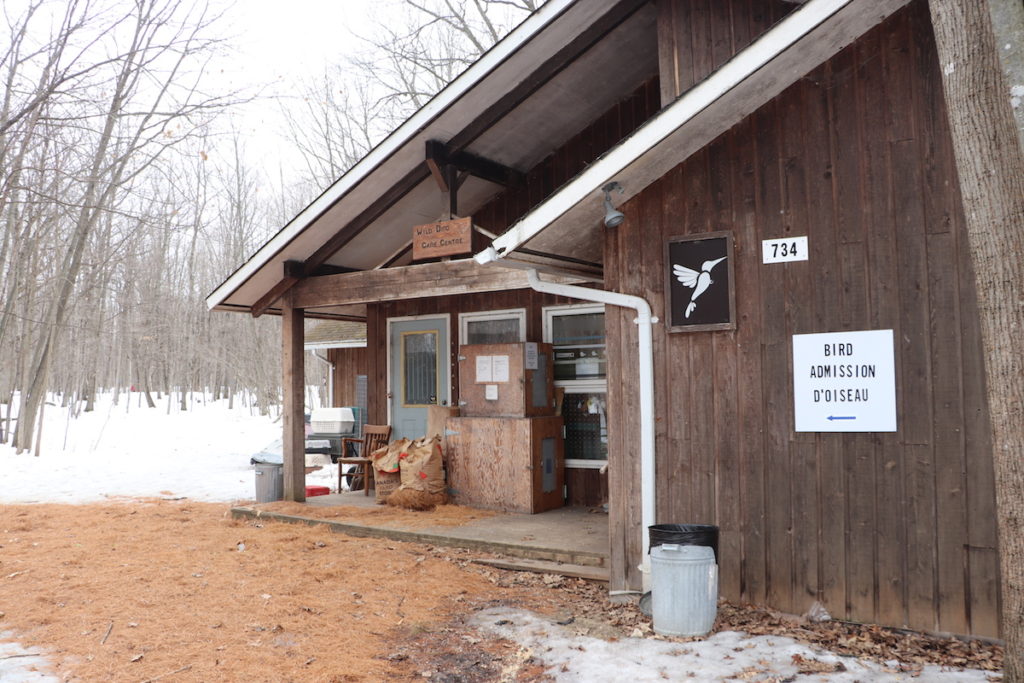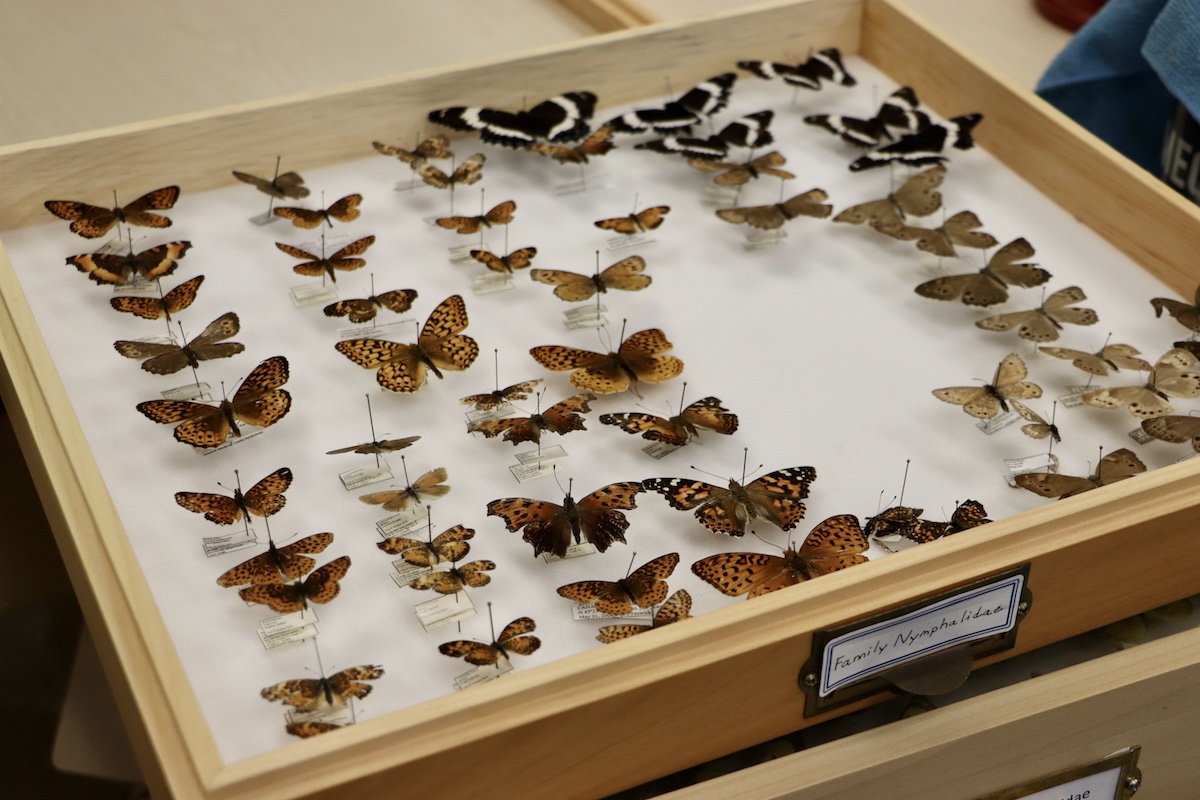For the average passerby, Safe Wings Ottawa’s West End headquarters may seem like any other office space—and it probably would be, if it weren’t for the 1,600 or so bird carcasses stored inside its deep freezer.
In line with its mandate of raising awareness about the danger unmarked glass poses to birds, Safe Wings has maintained this collection in preparation for its Annual Bird Display. The organization plans to exhibit the birds—all of which were killed as a result of window collisions in 2019—at the Canadian Museum of Nature or online by spring 2021. The exhibition was originally set to open at the end of 2020, but was rescheduled due to COVID-19.
According to Safe Wings citizen scientist and Carleton PhD student, Willow English, many of the statistics and specimens the organization uses for this initiative would not be available without the work of “citizen scientists”—volunteers who collect natural data and samples for future analysis by professional scientists.
“You’re probably looking at almost 250,000 birds dying each year from collisions alone, which is something we wouldn’t know if we didn’t have citizen scientists taking the time out of their days to observe and report these numbers,” English said.
With the launch of over 30 federally-recognized citizen science projects in Canada within the past 10 years alone, citizen science has become a popular data collection strategy in environmental and climate change-oriented research projects.
“As more birds die out because of habitat loss and temperature changes, bird populations have to be protected against every kind of danger,” English said. “Citizen scientists give us the data we need to validate our cause against these dangers.”

Community and science
Raising awareness about the consequences of climate change is one of the main reasons why so many researchers have turned to citizen science as an observational tool, said Larissa Holeman, Ottawa Riverkeeper’s director of science and policy.
“Ottawa Riverkeeper’s overall strategy is to work closely with communities and individuals to ensure the Ottawa River remains swimmable, drinkable and fishable,” Holeman said.
She added citizen science helps to garner public support for scientific projects.
“Citizen science is a really amazing engagement tool that we can use to garner that public support that’s needed for climate change to gain traction,” Holeman said. “Participants are able to learn more about these issues and educate their communities about them on our behalf.”
According to Holeman, even communication about the proper collection and submission of samples can be turned into something that contributes to people’s overall understanding of the importance of Ottawa Riverkeeper’s research.
One of Holeman’s current projects, which relies entirely on the collections of citizen scientists, is looking at how over-salted roads located near bodies of water poison aquatic life through snow melts. She said they teach citizen scientists which days have melts significant enough for collection and how to properly seal a sample in a vial to go beyond ensuring research credibility.
“When citizen scientists know there’s certain standards that have to be met for legislation to take us seriously, that’s when a lot of them will take a step back and think, ‘Huh, this is the real deal—there’s something pretty serious going on here,’” Holeman said.

Citizen science and academia
While citizen science is most popularly practised by independent groups like Ottawa Riverkeeper and Safe Wings, more academic researchers are turning to the strategy for its ability to gather mass amounts of information in shorter amounts of time.
“It would be impossible to try and accumulate the amount of information (academics) get from a citizen science project through professional scientists alone,” said U of O research chair in conservation biology and eButterfly founder, Jeremy Kerr.
“As a lab, we wouldn’t be able to replicate the thousands of people’s worth of information and samples we get every year, even if you gave us a grant for 10 million dollars—which is about 70 times more than what it cost to put eButterfly together,” Kerr said.
Launched in 2011, eButterfly’s online portal allows “butterfly enthusiasts” to submit photos and observations of butterflies throughout North America. The data is then compiled and shared publicly for citizens and professional scientists to use for research related to species distribution and climate change.
“Before we can do something to help a species, we need to know if they’re moving and why they’re moving,” Kerr said. “Given climate change, we asked ourselves, ‘Is the location of species changing through time as climate conditions shift?,’ and based on the data made possible through citizen science, the answer to that question is an unequivocal, ‘yes.’”
Before the data can be shared on eButterfly’s website, Kerr said it is subjected to strict vetting. Each piece of information submitted through the portal is approved by multiple experts—including Kerr himself—to ensure the species and locations reported are not “completely outside the realm of possibility.”
Peter Soroye, a former undergraduate student at U of O, published a study in 2018 evaluating the vetting processes conducted by initiatives like eButterfly.
“What we found was that most citizen science projects vet in a similar way to eButterfly, and do a fantastic job at verifying that the information is correct,” he said.
Soroye’s study also looked at whether the data collected by citizen scientists offered any significant contributions to the picture of biodiversity in Canada, comparing it to what he called “traditional” datasets maintained by museums and other professionals.
“On its own, citizen science wasn’t able to capture the full picture—they weren’t finding all the same species professionals were finding,” he said. “But they did find new species professionals didn’t find, amounting to almost three (new species) in any given region.”
Holeman said citizen science’s ability to “fill in the gaps” left behind by academia is another reason why more researchers have started taking it more seriously, and challenges the common notion that “straight academic research” is the only thing that can push decision-making in government.
“While academic research is obviously incredibly important, it’s really citizen scientists that are identifying where more research needs to happen,” she said. “(Citizen scientists) can push for action against climate change as members of the public with concerns, rather than just professors with publications.”

Legal reasoning
While citizen science is seen by many as a new discipline, others consider it a return to traditional scientific inquiry—with a good amount of legal catch-up required as a result.
“Science used to be something practised by amateurs—random citizens with time to spare and who happened to be interested in a subject,” said Jamie Shaw, fellow at the University of Toronto Institute for the History of Philosophy of Science and Technology.
“The idea of citizen science, in terms of reaching out to random citizens to participate in various scientific activities, didn’t really make sense until the Second World War, when ‘the scientist’ as a strictly academic profession became a thing and sort of demanded the validity of independent work,” he explained.
According to Shaw, this “narrow idea” of legitimate science as conducted strictly within the confines of an academic laboratory has resulted in a lack of established laws protecting observations and samples collected by citizen scientists today.
In Canada, items with automatic copyright, such as photographs and written text, are protected upon creation, unless the creator gives express permission for someone else to use them. However, the protection of the data submitted by amateurs for the use of professionals largely depends on how existing copyright law views different mediums, explained Teresa Scassa, Canada research chair in information law and policy at U of O.
“If researchers really want to be able to use these submissions with no strings attached, they need to establish a set of terms and conditions on their websites outlining this transfer of ownership before they start accepting citizen scientists’ work,” Scassa said.
Even more importantly, Scassa added if researchers wish to abide by the legal ethics of knowledge governance—which currently make up the foundation of community science law—they must ensure citizen science-based studies are published publicly.
“If scientists want to make sure their research is being published productively, ethically and responsibly, they need to make sure they’re giving credit where credit is due—the data collectors—and giving those with credit access to the results of their work,” she said.
Maintaining engagement
For Holeman, one of the most important aspects of keeping Ottawa Riverkeeper’s citizen scientists engaged with her work is ensuring they’re able to see the results of their contributions.
“The communication piece is very critical,” she said. “We always try to share what we’ve learned back to the people who are doing the volunteer work directly, because we know these people care very deeply about how climate change is impacting their localities.”
For some citizen science organizations—including Ottawa Riverkeeper and eButterfly—this process involves compiling both the work and recommendations into online resources to be accessed by any member of the public.
For others, giving citizen science back to the community is a little more hands-on.
Though this year’s bird display is postponed due to the COVID-19 pandemic, English said the Safe Wings team expects around 500 people to attend the rescheduled event—if pandemic-related restrictions allow for a gathering of that size in 2021.
“Even though (the volunteers) are seeing these numbers every day when we’re out making observations, seeing it all come together in the display every year—it still takes even us out of the moment and makes us kind of realize what all this work is for.”
Featured image by Pascale Malenfant.






